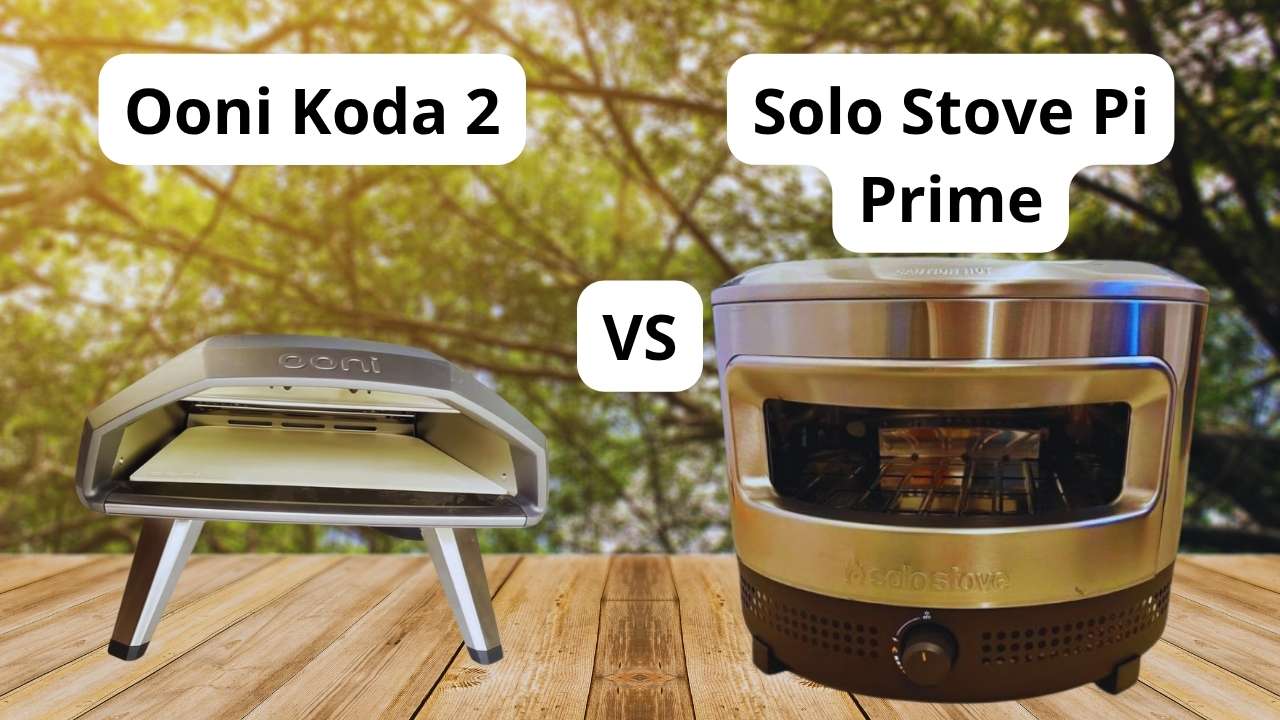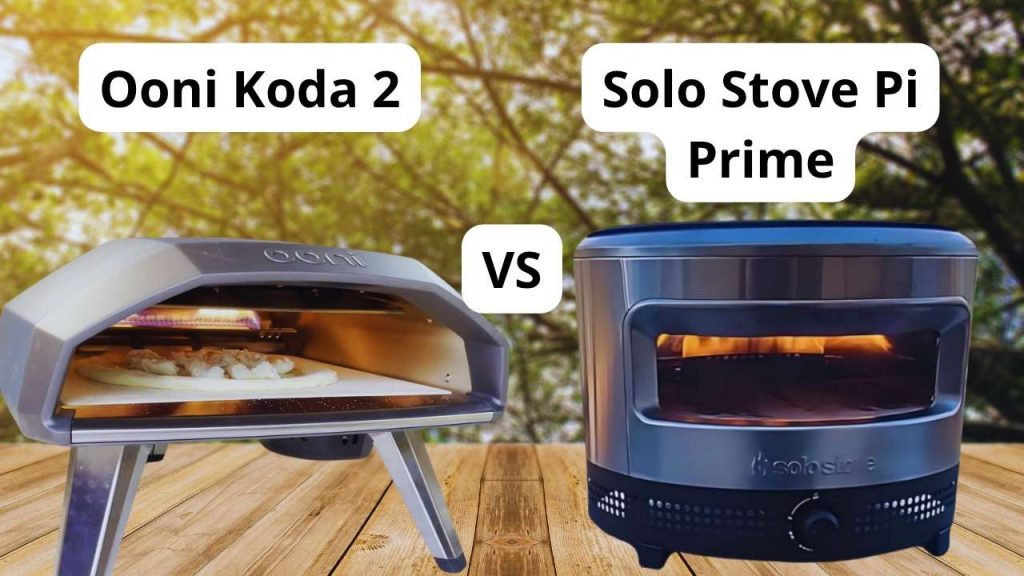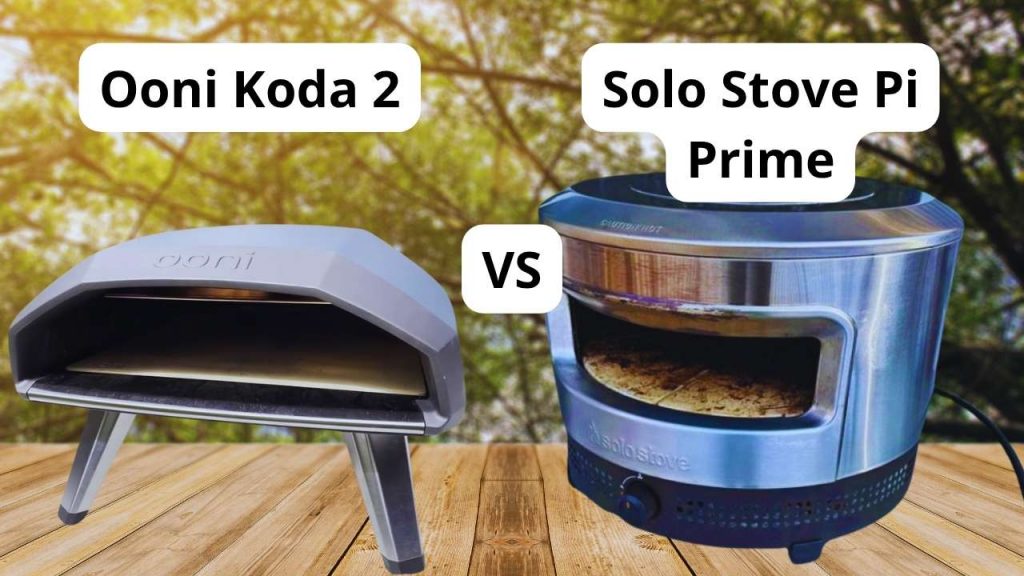As a restaurant chef with over 10 years of experience at Dequte Restaurant LironBoylston, I’ve worked with dozens of pizza ovens in both commercial and home settings. In this article, I’ll be comparing the Ooni Koda 2 and the Solo Stove Pi Prime—two gas-powered ovens I’ve personally used and tested in my kitchen.
I compared both ovens based on several critical factors: quality and materials, temperature control, shape, first-time usage impressions, power source, size, ease of cleaning, and of course, I conducted a real pizza cooking test to see how long each takes to deliver that perfect Margherita. If you’re curious about my full testing process, I’ve written a detailed breakdown in a separate article titled How We Test Pizza Ovens.
The Ooni Koda 2 is Ooni’s newest gas-only model, known for its G2 Gas Technology™ and rapid, even heating—built for serious performance with minimal effort.
The Solo Stove Pi Prime, on the other hand, brings simplicity and thoughtful engineering into a lightweight, accessible design, ideal for backyard pizza nights with friends or family.
I tested both the Ooni Koda 2 and the Solo Stove Pi Prime and shared a detailed comparison in this article.
Disclaimer: I use referral links in this article, which means if you purchase through them, I may earn a small commission—at no extra cost to you. It’s one of the few ways I keep this blog running and continue to test ovens thoroughly for real-life performance. Thanks for your support!

Ooni Koda 2 VS Solo Stove Pi Prime: Quality and Materials
| The Ooni Koda 2 features a die-cast aluminum body, 50% thicker pizza stone, and a premium build that feels modern, durable, and weather-resistant. |
The Solo Stove Pi Prime boasts a robust stainless steel body and high-quality construction that ensures efficient heat retention and long-term durability.
|
Ooni Koda 2 VS Solo Stove Pi Prime: Temperature Control
| Thanks to G2 Gas Technology™, the Ooni Koda 2 delivers evenly distributed heat, reaches 950°F in 15 minutes, and supports smart monitoring with the Ooni Connect™. |
The Solo Stove Pi Prime also heats up fast (15 minutes) and reaches high temps, but lacks a built-in thermometer—so external tools are recommended for precision.
|
Ooni Koda 2 VS Solo Stove Pi Prime: Shape
| The Ooni Koda 2 has a rectangular, sealed chamber that enhances airflow and minimizes heat loss. Great for even cooking with less effort. |
The Solo Stove Pi Prime features a demi-dome cylindrical shape with a wide opening, ideal for maneuvering pizzas and promoting efficient convection cooking.
|
Ooni Koda 2 VS Solo Stove Pi Prime: First-Time Usage Impressions
| The Ooni Koda 2 is plug-and-play with a 10-minute setup. Its gas-only operation makes it beginner-friendly and consistent right from the start. |
The Pi Prime is also easy to set up with clear instructions. First use was smooth, but you’ll need to guess heat levels without a built-in thermometer.
|
Ooni Koda 2 VS Solo Stove Pi Prime: Power Source
| The Ooni Koda 2 runs exclusively on propane gas for a clean, consistent flame and quick cooking cycles. |
The Solo Stove Pi Prime also uses propane gas, offering clean, efficient heat—but lacks the multi-fuel flexibility some users might want.
|
Ooni Koda 2 VS Solo Stove Pi Prime: Size
| Weighing 35 lbs, the Ooni Koda 2 includes a 14-inch pizza stone, foldable legs, and a compact body—perfect for patios or travel with the carry cover. |
The Pi Prime is slightly lighter at 30 lbs, with a 20.5” diameter and a 12-inch pizza capacity. It’s portable but bulkier than it looks.
|
Ooni Koda 2 VS Solo Stove Pi Prime: Ease of Cleaning
| The Ooni Koda 2 is low-maintenance: no soot or ash to clean, and the high heat helps burn off residue. Wipe the stone and shell, and you’re done. |
The Pi Prime is also easy to clean—just use a grill brush on the hot stones and wipe down the outside. No ash, but more crumbs may fall between dual stones.
|
Pizza Cooking Test
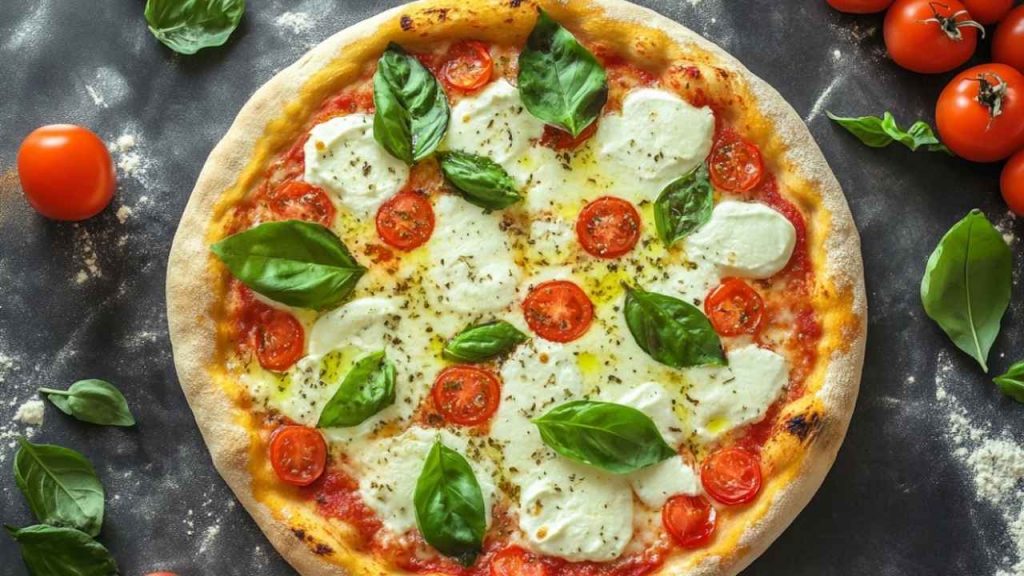
To evaluate real-world performance, I tested both ovens by cooking a classic 12-inch Margherita pizza using the same dough recipe, sauce, and toppings.
The Ooni Koda 2 reached its target temperature of 950°F in just 15 minutes. Once preheated, the oven cooked the pizza in exactly 60 seconds. The crust developed a beautiful leopard spotting with a balanced crunch and chew. The toppings were evenly cooked, and the cheese was perfectly melted without burning. Thanks to the G2 Gas Technology™, the heat distribution was incredibly even—no need to rotate the pizza during the bake. It was the closest result I’ve had to a Neapolitan-style pizza outside of a wood-fired oven.
The Solo Stove Pi Prime also performed well, reaching cooking temperature in about 15 minutes. The Margherita pizza took 90 seconds to cook. The result was flavorful with a nicely puffed crust, but the bottom was slightly more browned than the top, requiring a quick mid-bake turn for optimal results. Without a built-in thermometer, it was harder to gauge stone temperature precisely, but with some experience, it’s manageable. The taste was excellent—crispy, well-cooked, and satisfying.
Overall, while both ovens produced delicious pizzas, the Ooni Koda 2 offered a faster and more even cooking experience with less need for manual intervention.
How We Tested
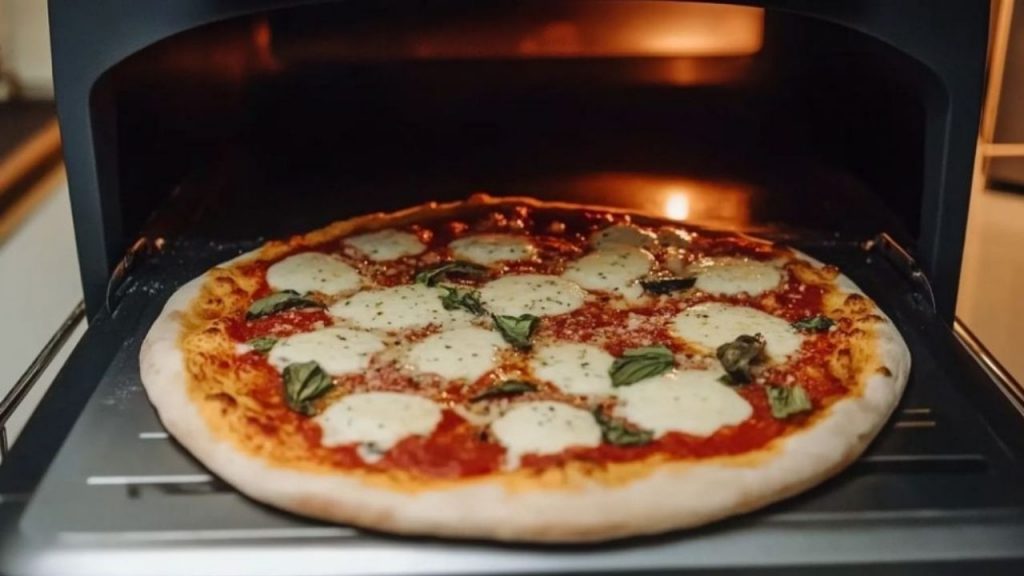
With over ten years of experience as a chef at Dequte Restaurant LironBoylston, I take pizza oven testing seriously. For this comparison between the Ooni Koda 2 and the Solo Stove Pi Prime, I used both ovens in real-world kitchen settings, aiming to evaluate how they perform not just on paper, but during actual cooking sessions.
I paid close attention to build quality, temperature control, and how each oven handled under pressure. I evaluated how easy they were to set up for the first time, how intuitive the controls felt, and how well they retained and distributed heat. I also looked at their shape and design to see how that influenced airflow, consistency, and ease of use during a busy session.
To get a sense of long-term usability, I considered the cleaning process and how quickly each oven recovered between pizzas. Of course, the most important part of my testing involved actually making pizza. I used the same dough and toppings to make identical Margherita pizzas in both ovens, timing how long it took each one to heat up and cook a pizza to perfection. I judged the final result by taste, texture, and how evenly the crust and toppings cooked.
If you’re curious about how I run all my oven tests, you can check out my full guide in the article titled “How We Test Pizza Ovens.”
Conclusion
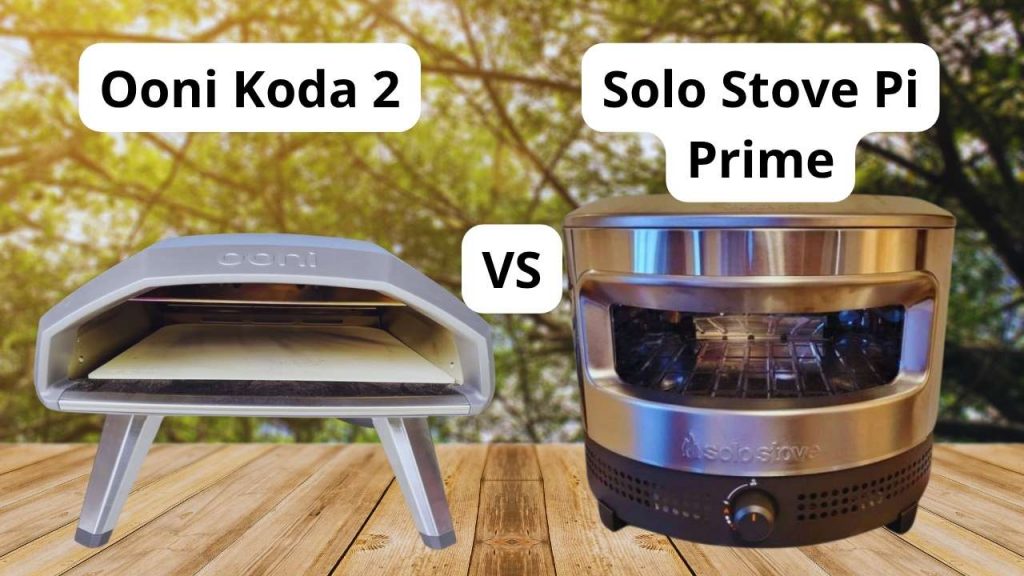
At the end of the day, whether you go with the Ooni Koda 2 or the Solo Stove Pi Prime depends on your personal cooking style and preferences. Both ovens deliver impressive results and bring something unique to the table.
If you decide to buy one, I’d truly appreciate it if you used my referral links. It helps keep this blog alive, and I earn a small commission at no extra cost to you.
Here’s the link for the Ooni Koda 2 referral link and the Solo Stove Pi Prime referral link. Thanks for supporting my work!

